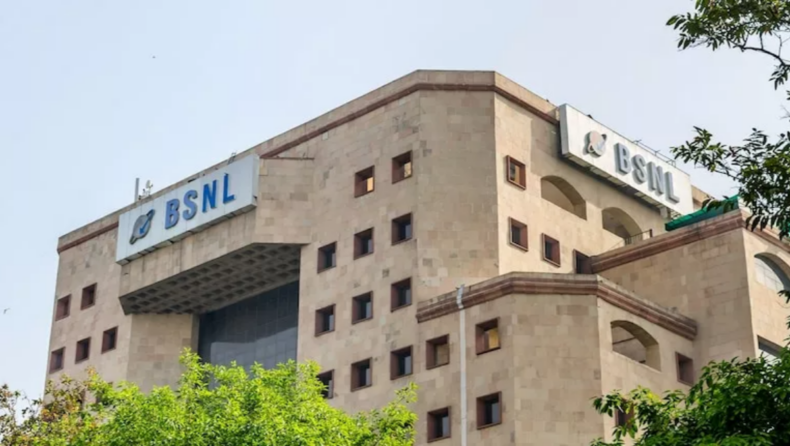The Union Cabinet on Wednesday approved yet another revival package for Bharat Sanchar Nigam Limited (BSNL) worth Rs. 1.64 lakh crore to boost its overall competitiveness in the challenging domestic telecom market and de-stress its balance sheet. The second reform package will be implemented after 2019 and will last for the following four years. The rehabilitation package will include actions on three fronts, including injecting new cash for improving the state-owned operator’s services, bolstering its fragile balance sheet, and expanding its fiber network by combining Bharat Broadband Nigam Limited (BBNL) and BSNL. The package is anticipated to aid in a turnaround such that BSNL begins turning a profit in FY2026-27.
What kind of assistance is offered by the newest package?
There are three main parts to the bundle. Beginning with the effort to upgrade its services, BSNL would be administratively granted spectrum in the 900/1800 MHz band at a cost of Rs. 44,993 crores through equity injection. Spectrum is a term used to describe the unseen radio frequencies that wireless signals travel on, enabling communication over the internet and for phone conversations.
Simply put, the allocation would assist BSNL in both growing and consolidating its usable bandwidth. As a result, it would be able to deliver high-speed data using a larger network footprint, which is especially crucial in rural areas. In addition to spectrum, the government would give the business Rs. 13,789 crores to cover the operational viability gap in the financially unviable rural wireline operations it had carried out between 2014–15 and 2019–20.
In addition, the Government would be raising the authorized capital from Rs. 40,000 crores to Rs. 1.50 lakh crore in order to pay for capital expenditures, spectrum allocation, and adjusted gross revenue (AGR) obligations. The annual license fee and spectrum usage charges that telecom service providers (TSPs) are expected to pay to the government are calculated using a fee-sharing mechanism referred to as the AGR.
What was the package for 2019?
The proposed merger of Mahanagar Telecom Nigam Ltd (MTNL) with BSNL was one of the package’s more significant features. It was believed that MTNL’s base in Mumbai and Delhi and BSNL’s reach into rural populations made it necessary to compete against their synergy in order to establish a pan-Indian presence. It learned in April of this year that the merger had been postponed because of budgetary constraints, notably MTNL’s significant debt.
The Government had announced a capital infusion of Rs. 20,140 crores for buying spectrum to help boost operations. The combined package for MTNL and BSNL opened the door for the two PSUs to issue long-term bonds with sovereign guarantees from the central government.
How does BSNL stack up against its competitors?
Average revenue per user (ARPU), often known as revenue per user, is a crucial indicator to evaluate the health of telecom service providers. Due to BSNL’s obligations in the social sector, all losses on capital assets must be covered only by internal accruals.
Therefore, unlike its private peers, it is unable to quickly adapt to technological innovation in the market, such as a quick switch from 4G to 5G. As a result, its ARPU declines and the range of services is affected. On the other side, Reliance Jio’s ARPU climbed by 27% year over year, while Bharti Airtel’s ARPU increased by roughly 23% in the quarter ending in March.
A review of the Telecom Regulatory Authority of India’s (TRAI) monthly subscriber data from the end of April to the beginning of May reveals that during that time, BSNL lost wireless subscribers at a rate of 0.03 percent on average each month, while Bharti Airtel and Reliance Jio combined had gained subscribers at a rate of 0.43 percent.
The quantity of Base Transceiver Stations (BTSs) that the three firms own varies as well. The BTS is a piece of hardware that transmits and receives radio signals from mobile devices and passes them to other network terminals. Reliance Jio and Bharti Airtel controlled six and five and a half times more BTSs than BSNL, respectively, according to data presented in the Rajya Sabha in February.
What makes the market so fiercely competitive? Exists an undiscovered opportunity?
The second-largest telecom sector in the world, according to the National Investment Promotion and Facilitation Agency, is found in India. The overall tele-density for the nation is 84.88 percent. There is, nevertheless, a distinction between rural and urban places. The rural market is virtually untapped, with a tele-density of just 58.2 percent, compared to the urban market’s tele-density of 134.70 percent. However, as of the end of May, Bharti Airtel and Reliance Jio each had nearly five times as many subscribers in rural areas as BSNL.














